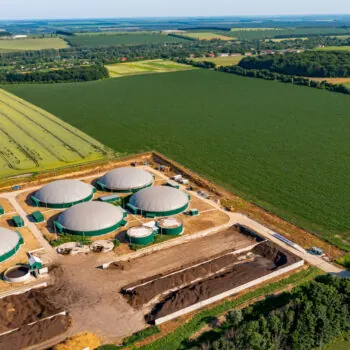As the war in Ukraine enters its second winter, international donors face the challenge of aligning emergency and reconstruction aid with the urgent need to keep the population warm and ensure the country’s long-term energy security. Clean-energy solutions represent a triple win in this challenging context. They boost energy autonomy and resilience, reduce air pollution and greenhouse gas emissions, and set Ukraine on a path to a low-carbon recovery.
Donor-country support for Ukraine’s energy transition has grown considerably since the start of the war. The Ukraine Recovery Conference (URC) held in London in June 2023 concluded with strong commitments to prioritize the modernization and decarbonization of Ukraine’s energy grid within overall recovery assistance. The G7+ Group announced soon after that it would launch the Clean Energy Partnership with Ukraine to build “a more modern, secure, decentralized, and cleaner energy system fit for a Net Zero future and with greater integration with Europe”. The US government pledged $520 million for the partnership, and USAID is planning to invest additional funds. The EU is also mobilizing funds, so far having made available close to €200 million under the Ukraine Energy Support Fund.
Two developments largely explain this international backing.
First, Russia’s relentless and deliberate targeting of Ukraine’s civilian energy infrastructure has destroyed more than half of the country’s energy grid. The Ukrainian government and its international allies recognize that building back a system that relied heavily on Russian fossil fuel imports, and that had been one of Europe’s most carbon-intensive and energy inefficient, is not an option.
Second, with the prospect of continuing Russian attacks on infrastructure, the transition to a decentralized energy grid that runs on locally available renewable sources is the fastest and most affordable way to boost resilience and keep the lights on in the face of looming disruptions.
However, while the international aid packages for Ukraine’s energy transformation can jumpstart innovation, the total funding required to build a decentralized, low-carbon grid is much higher than the amounts earmarked.
Another problem is that the rollout and implementation of the aid will be slow. Cities that urgently need help to fix damaged energy infrastructure and to develop ways to generate power locally will be hardest hit by delays and gaps in support.
With little assistance flowing to Ukrainian cities, municipalities are left for the most part to their own devices. Despite its announced goal of building a decentralized energy grid, the Ukrainian government thus far has made no systematic attempts to include local stakeholders in the drafting of energy plans. But if Ukraine’s transition to a low-carbon and decentralized energy system is to be sustainable in the long term, local authorities, businesses, and civil society must be involved in formulating solutions that work best for their communities.
To draw attention to the urgent need for assistance at the city level, fifty Ukrainian local leaders recently signed a letter in which they thanked the US government for its energy aid and called for more direct support to municipalities, especially in the form of renewable energy technology.
While the diesel generators that the United States and other international partners have sent to Ukraine are helpful, they rely on fuel and are highly polluting, and so are not a long-term solution. Seeking to bridge short- and long-term needs, a growing number of municipalities are turning to renewable energy technologies—especially solar panels, storage systems, and heat pumps—as effective solutions to improving local energy security, starting with critical infrastructure such as hospitals and schools.
During the week of October 30, 2023, two of the Ukrainian mayors who signed the letter addressed to Secretary of State Antony Blinken will be in Washington, DC, to explain their needs to US policymakers at the federal, state, and city levels, and to explore ways in which their cities could become pilots for a new model of decentralized energy assistance.
The US government and potential investors in Ukraine’s energy transition should seriously consider the mayors’ proposal. Partnerships with Ukrainian municipalities could be a win-win situation. Ukrainian cities that have climate plans in place and are eager to drive clean energy solutions would receive the financial, technological, and capacity support they so urgently need, and donors and investors would benefit from trying out new policies and technologies on a small scale and at relatively low risk and cost, with the option to scale solutions once they prove successful and profitable.
Especially for the private sector, being first matters. Now is the time for American clean energy technology companies to gain a foothold in Ukraine, starting at the local level. Investing in Ukraine is not only an opportunity to develop new markets in the region, but also to create jobs at home. The Ukrainian mayors visiting Washington are open to talking business.
This blog was written by Hannah Abdullah from the German Marshall Fund (GMF) and E3G‘s Max Gruenig and originally published by GMF here.


